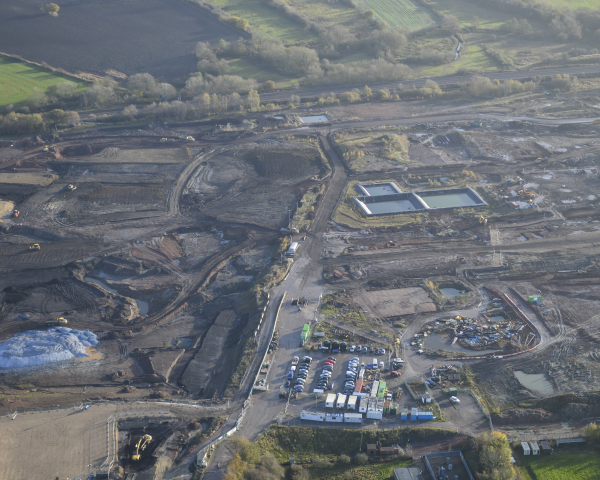A69 Haydon Bridge bypass
The local community of the once quiet and tranquil Haydon Bridge in Northumberland was being negatively affected by air pollution, noise, and safety concerns as traffic thundered along the A69 through the village.
Purpose
A new 1.8-mile-long bypass was proposed, to take around 12,000 vehicles a day away from the centre and restore the charm of the village, whilst speeding up journey times on what is a key trunk route.
We were employed to design and build a multi-span viaduct to carry the new A69 over both the South Tyne River and the Newcastle to Carlisle Railway. Our work also included three other bridges, two over side roads and one over Langley Burn in Gees Wood.
What we did
VolkerStevin and Hanson were 50% joint venture partners, working as an integrated team with design partners, Capita. We used an early contractor involvement period to develop the client’s concept into an outline design and carry out the negotiations and statutory preparations necessary to produce and gain approval of the Draft Orders.
We then helped the scheme pass a public inquiry process with minimal objections. Our project manager attended the hearing and presented method statements and details of construction. This excellent result was the culmination of considerable third-party liaison and engagement with the Environment Agency; Network Rail; county and local authorities; the parish council; local residents; businesses and landowners.
The third phase involved the detailed design and construction. The design of the bypass ensured that as much of the new road as possible was in cutting, which acts as a noise mound to minimise disturbance to the village. False cuttings were created, where natural mounds were not present. This process also helped to ensure that a cut and fill balance was achieved between the excavated rock and soil and the construction of embankments and mounds.
A major feature of the scheme is the multi-span viaduct structure. During its construction, our cofferdams allowed for inundation and subsequent pumping out of flood water and were recognised as best practice in a paper presented in the Fluid Design Guide for in-river working.
Project successes
The construction project was delivered on time despite the wettest summer in 150 years, followed by a winter containing significant snowfall.
The high quality of work delivered by the project team led to a CEEQUAL Whole Project ‘Excellent’ Award. CEEQUAL is the world’s leading sustainability rating scheme for infrastructure. We protected existing wildlife corridors, and flora and fauna on the SSSI riverbank and adjacent area of woodland. We installed bat conduits over the highway cutting, and habitat enhancements, which encouraged the return or regrowth of species displaced during construction. The planting programme included 214 large trees to give an immediate effect, 21,000 hedgerow plants, 28,000 woodland trees and 5,000 shrubs.
The scheme was designed to achieve a cut and fill balance between the excavated soil and rock and the construction of embankments and landscape mounds, which also assisted the mitigation of environmental impacts - 250,000m3 in total. All demolition material produced on site was incorporated into the project – planings and kerbs were crushed on site and used as Class 1A fill material; stone from existing walls was stockpiled and reused; fence rails and posts were mulched on site along with cleared hedgerows and incorporated into the landscaping works. 100% of unused materials at project completion were sold, donated or transferred to other contracts.
Our public relations strategy led to a Considerate Constructors Scheme Bronze Award. We employed a Community Liaison Officer who acted as a focal point for all consultation and information requests. Our Community Liaison Officer managed and organised consultation events, exhibitions, site visits, a project extranet site, letters to directly affected parties, health and safety presentations at local schools, newsletters, and press articles.
The project received a Commendation at the Institution of Civil Engineers (ICE) North East Robert Stephenson Awards.



